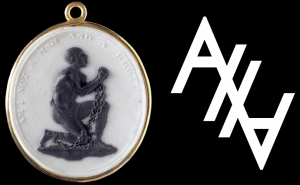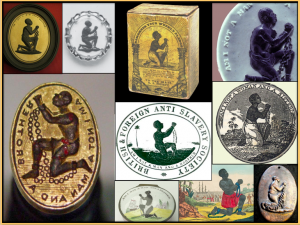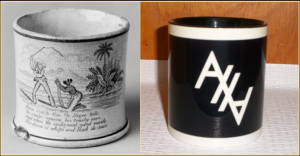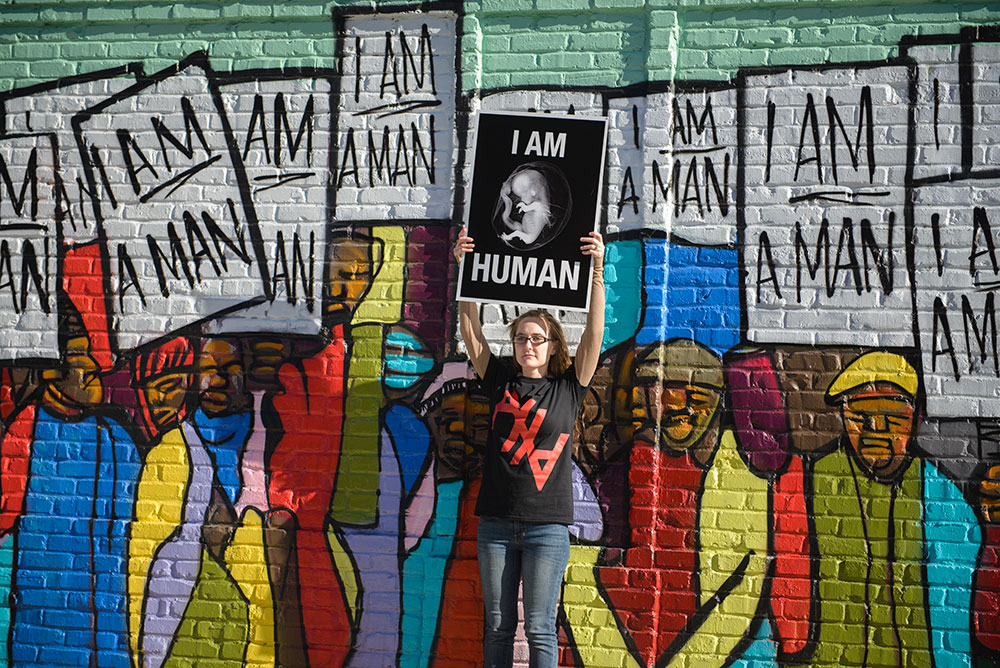The Significance of the AHA Symbol
One of the primary difficulties in raising awareness about the atrocity of abortion in our culture is the fact that most people are simply too concerned with their own personal peace and comfort to make discussion of abortion part of their daily life. Most people, even “prolife” people, are far too socially insecure, sensitive, and afraid of confrontation, to speak their mind about abortion except for when they’re safe within the confines of their church, family, and fellow “pro-life” friends.
Such bashfullness is a subtle compromise with the continued occurence of legalized child killing that continues in this country.
 The world out there is perfectly happy with the fact that you are prolife so long as you keep it to yourself. As they like to say, “You do not have to be pro-abortion so long as you do not seek to take away somebody else’s right to an abortion.” Of course, the pro-choice lobby and abortion industry hates the fact that prolifers seek to defund their commercial killing centers and replace pro-choice politicians with elected officials who desire the repeal of Roe v. Wade or put restrictions on the practice of abortion, but, the prochoice lobby knows full well that they have been winning this political battle for the past 38 years and every day that abortion remains legal is a day that some 3,500 women make their way to so-called clinics and end the lives of the children developing within their wombs. Millions of dollars are made and millions of lives are destroyed.
The world out there is perfectly happy with the fact that you are prolife so long as you keep it to yourself. As they like to say, “You do not have to be pro-abortion so long as you do not seek to take away somebody else’s right to an abortion.” Of course, the pro-choice lobby and abortion industry hates the fact that prolifers seek to defund their commercial killing centers and replace pro-choice politicians with elected officials who desire the repeal of Roe v. Wade or put restrictions on the practice of abortion, but, the prochoice lobby knows full well that they have been winning this political battle for the past 38 years and every day that abortion remains legal is a day that some 3,500 women make their way to so-called clinics and end the lives of the children developing within their wombs. Millions of dollars are made and millions of lives are destroyed.
The pro-abortion culture that we live in is perfectly happy with the fact that you are pro-life so long as all you ever do is check a box from time to time and leave them to influence the culture with their so-called “prochoice.” What they do not want you to do is destroy the steady stream of misinformation about abortion which they produce in order to encourage the continued prevalence of abortion in this country while it remains legal. They do not want you to educate the people around you about abortion. They do not want you to influence others to becomen opposed to abortion. They do not want you to inform women of the dire emotional, physical, and spiritual consequences which follow the procurement of an abortion. They do not want you to transform the so-called right to abortion on demand from a womens’ rights issue to a human rights violation.
Pro-choicers just want you to keep your pro-life opinions to yourself and leavethem alone. This is not good for anybody.We must make ourselves visible. We must point ourselves out.
We desire to more boldly identify ourselves and our position on abortion as a thoughtful, expressive, and engaging presence within our so-called modern society. One of the principal reasons we want to do this is simply to increase the occurrence of meaningful conversations about abortions. Identifying oneself as aligned with a controversial opinion on a controversial topic might be seen by some people as unhelpful or even too radical, but we simply must end the mutual assured silence about abortion in our day to day world and arrest the apathy of many pro-lifers who have chosen to quietly agree to disagree on this issue.
 As the abolitionists of earlier times stood up and declared themselves emphatically opposed to the blindly overlooked and sometimes willfully ignored evil that undergirded much of the self-proclaimed superiority of their whitewashed society, we also desire to stand up and be clearly counted in opposition to the legally sanctioned practice of exterminating developing human beings in the name of another person’s right. We do not want to create chaos, but we do want to be seen and heard. To this end, we have developed a modern abolitionist symbol that we can put on our persons, our blogs, our products, and our businesses (among a plethora of other items). In doing so, we are following earlier abolitionists throughout history. The abolitionists of slavery created and employed a well-known image of a slave on bended knee lifting up his chained arms to heaven with the slogan “Am I not a man and a brother?” Perhaps you have seen this in history books, museums, or documentaries on the abolition of slavery.
As the abolitionists of earlier times stood up and declared themselves emphatically opposed to the blindly overlooked and sometimes willfully ignored evil that undergirded much of the self-proclaimed superiority of their whitewashed society, we also desire to stand up and be clearly counted in opposition to the legally sanctioned practice of exterminating developing human beings in the name of another person’s right. We do not want to create chaos, but we do want to be seen and heard. To this end, we have developed a modern abolitionist symbol that we can put on our persons, our blogs, our products, and our businesses (among a plethora of other items). In doing so, we are following earlier abolitionists throughout history. The abolitionists of slavery created and employed a well-known image of a slave on bended knee lifting up his chained arms to heaven with the slogan “Am I not a man and a brother?” Perhaps you have seen this in history books, museums, or documentaries on the abolition of slavery.
The abolitionists of slavery disseminated this image widely and used it to identify themselves as those living in a world of legalized human slavery to which they actively expressed their dissent. They employed this symbol widely, engraving it on everything from fashion accessories to domestic objects which they used in their homes and businesses. The symbol adorned gentlemen’s’ snuffboxes and pocket watches and ladies’ brooches, bracelets, and ornamental hair pins. (They hijacked sentiments of fashionability, which usually confined itself to materialistic self-aggrandizement, made anti-slavery fashionable, and for once, employed fashion “in the honourable office of promoting the cause of justice, humanity, and freedom.”)
This symbol and its accompanying slogan was packed full of expression and argument. The statement, “Am I not a man?” argued that the slave’s bondage was unjust because, as a man, the slave was a fellow human being created in the image of God and possessed of the sanctity and dignity afforded human beings as God’s image-bearing divine creations. The second half of the slogan, “and a brother,” signaled another theological truth which the abolitionists espoused. The African slave was a brother of the European because he had the same Savior and Redeemer, Christ Jesus.
(Yes, the appeal to end slavery embedded in this symbol was deeply theological and religiously motivated. Just read up on the history of the Abolitionist movement).
These abolitionists created a way for people to make their views on the “slavery question” clear: This in turn created a culture of dissent, debate, and eventually, fruitful discussion.
As Abolitionists we do believe in a real morality rooted in a real reality; and that reality is God. This is our theological position and we are perfectly willing, ready, and able to discuss and debate it. Just like the first Abolitionists (of Human Slavery), we stand by our theological presuppositions and adhere to the moral values which proceed from them. Human beings are created in the image of God and cannot be enslaved because they are black or discarded and experimented upon because they are small, “racially inferior” or “undeveloped blobs of cells.”
We are specifically devoting much of our time and energy towards the abolition of a legal system and worldview which undergirds the destruction of human beings. This is our position and we are happy to express and defend it. We feel that we are in great company.

 We have created a symbol to be used today for the very same purpose. Just as earlier abolitionists intended the use of their symbol to create discussion and reveal a clear divide in their culture, we are choosing to adopt a symbol for the same purpose. Again, we do not want to create unrest through any of our activities, but we do want to point out the fact that our happy little day to day world in America is a charade. Just as the abolitionist unsettled the thoughts of most people in Britain and America who just went about their lives thinking little of the plight of African men and women who had been stolen from their homeland, piled on top of one another in a ship, and transported to the West Indies where they were worked to a short death, we want to wake up the masses of individuals in our culture whose opinion on abortion follows simply from whether they vote Democrat or Republican.
We have created a symbol to be used today for the very same purpose. Just as earlier abolitionists intended the use of their symbol to create discussion and reveal a clear divide in their culture, we are choosing to adopt a symbol for the same purpose. Again, we do not want to create unrest through any of our activities, but we do want to point out the fact that our happy little day to day world in America is a charade. Just as the abolitionist unsettled the thoughts of most people in Britain and America who just went about their lives thinking little of the plight of African men and women who had been stolen from their homeland, piled on top of one another in a ship, and transported to the West Indies where they were worked to a short death, we want to wake up the masses of individuals in our culture whose opinion on abortion follows simply from whether they vote Democrat or Republican.
Our symbol is admittedly far more logo driven than the abolitionist illustration of old. This is fully intentional. We live in a much more text driven, graphic design, and logotype culture; and we like to leave the onus on the person wearing the symbol or signing the symbol at the bottom of a receipt to take the opportunity to explain what the AHA means and why they are an abolitionist.
 We must label ourselves and designate ourselves as a a people unified against the legally sanctioned system of death and politically approved practice of human abortion. We must work to abort Roe v. Wade but until this legal triumph occurs, we must work to cut down the number of abortions occuring within our own communities.
We must label ourselves and designate ourselves as a a people unified against the legally sanctioned system of death and politically approved practice of human abortion. We must work to abort Roe v. Wade but until this legal triumph occurs, we must work to cut down the number of abortions occuring within our own communities.
When we’re out there in the world going to and fro, from work or class, grabbing a cup of coffee or getting the grocery shopping done, we “pro-lifers”just blend in with the apathetic culture of death that we are supposively opposing. I imagine that many of us do not wear our pro-life opinions on our sleeves for the sake of social cohesion and comfort, but this is crazy. We should be far more concerned with abolishing abortion than we are with sustaining a culture of apatheic indifference.
Most of us never even think about how strange it is that when we are sitting in a Starbucks next to someone we don’t know, there is about a 50% chance that they think that dismembering and removing a ten week old human being from a mother’s womb is morally right because it’s legal, and not unjust because the unborn fetus is “just a part of a woman’s body”, “not a human person”, half the time “unwanted”, and believe that abortion is a “liberating women’s’ right”, and that regardless of what some pro-lifers think, “lots of people do it” so it must not be that bad.
Very likely, the pro-choicer in the coffee shop assumes you share his or her views simply because you do not look like the stereotypical pro-lifer. (Of course, what a pro-lifer looks like is almost entirely constructed by savvy pro-choicers in the media, but what have we done to set them straight?) Keeping unpopular and controversial views to oneself does create a good deal of personal peace and social comfort, but it also greatly numbs and discourages fruitful discussions about social injustices like abortion. While some disagreements are not worth rocking the boat over, others most definitely are. And sometimes, all one needs to do to rock the boat is express their adherence of a controversial position publicly.
 Silence, and the agreement to just live beside one another in happy harmony, actually creates deep social polarities which eventually come to the fore during political discussions. At that time, everybody then gets to act all flustered and amazed by the position of their political opponents and murmur things to one another about how they “can’t believe anyone actually believes that.”
Silence, and the agreement to just live beside one another in happy harmony, actually creates deep social polarities which eventually come to the fore during political discussions. At that time, everybody then gets to act all flustered and amazed by the position of their political opponents and murmur things to one another about how they “can’t believe anyone actually believes that.”
Like slavery abolitionists who used the “am I not a man and a brother” image to identify themselves and the organizations and societies to which they belonged, we are choosing to identify ourselves with a modern Abolitionist Symbol. By having a recognizable symbol, and wearing it proudly and boldly, we can make ourselves clearly visible in the city in which we live. You can also use the symbol to identify yourself as an abolitionist online. For instance a good number of folks have incorporated the AHA symbol into their Facebook profile pics and twitter avatars. A number of bloggers in the Abolitionist society have placed the symbol, discreetly and indiscreetly on their blog. You can use this widget to place the AHA symbol on your Facebook pic or Twitter avatar.
You can also use the symbol to identify yourself as an abolitionist in the real world. Visit ahagear.com to find T-shirts, decals, and other items that you can use to place the AHA symbol on your person and property.
IMPORTANT NOTE: Please understand that “Abolish Human Abortion” uses the abolitionist symbol ourselves and that it is not our “logo.” The AHA symbol is not anybodies’ “logo.” The difference between a symbol and a logo is quite significant. The way a symbol works is that it can be adopted and used by various individuals and organization who embrace what that symbol stands for and align themselves with others who likewise embrace the ideology which the symbol represents. For example, you would add a symbol to your company or organization’s logo if your company or organization adopted the principles and strategy of abolition, but you would not attach your logo to another companies logo unless you were going through a merger. and that we do not hold the copyright to it. The copyright is held by The International Coalition of Abolitionist Societies. AHAgear.com similarly does not own the rights to the AHA symbol but are licensed by the ICAS to produce abolitionists materials and resources which are marked as Abolitionist by the presence of the AHA symbol.
